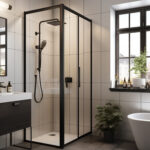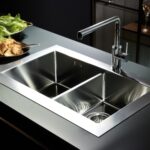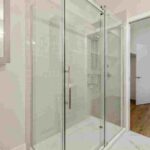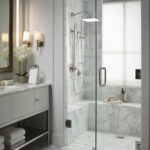Deciding between a siphon or a wash down style can be a little confusing. So what is the difference between siphon and wash down toilets?
What is Siphonic & Washdown
Wash Down: In a wash down action toilet, the water from the tank pours into the bowl and washes the material down the outlet. It is a “pushing” action only, and does not evacuate the bowl. Waste is simply “pushed” by free flowing water out of the trapway (usually 4” in diameter). These toilets have small (4’’ x 5’’) water surface areas in the bowls that are deep down in the bowl.
Siphonic : In a siphonic action toilet, the trapway fills with water during the flush which initiates a siphonic action which “pulls” material out of the bowl while the water entering the bowl from the tank through the jet and the rim “pushes” material out. This simultaneous pushing and pulling completely evacuates the bowl during every flush. Normally, the siphonic method employs a smaller outlet (usually 2” diameter).
Comparisons between these two types
- BOWL SIZE
Siphonic flushing requires a bigger elongated bowl to fill water properly to flush compared to the compact version of the wash down. Most Europeans prefer the space-saving models whilst elongated versions are preferred in the United States, thus, US type toilets to siphonic and European toilets to wash down.
- WATER SAVING
Wash down toilets is usually equipped with a DUAL FLUSHING mechanism that can accommodate 3 or 6 gallons per flush for solid or liquid waste. In contrast, siphonic toilets require 6 gallons or more to flush properly. Some countries even mandate 4.5 gallon flush capacity. (Dual flushing is not advisable for siphonic systems)
- TRAPWAY
Siphonic has a greater tendency to clog due to the smaller trapway. Since wash down does not need this suction, it has a larger trapway but leaves less water on the bowl after flushing compared to the half full of the siphonic version. Splashing sometimes occurs when solid waste hits the water for wash down versions. This can be minimized by placing a piece of toilet paper over the water.
- SPARE PARTS AND MAINTENANCE
Over time, because of the impurities of our water, silicon or rubber washers for both toilets need to be changed. (Water seepage will occur); A wash down toilet has top button flush, ABS plastic float valve and flush valve which rarely need replacement. Siphonic type usually comes with the side lever, ABS plastic float valve and flush valve. Some versions have a float ball and chain which need to be replaced more often. (Replacement parts are generally sold in major hardware stores.)
Cleaning
Depending on the holes around the bowl rim where the water comes out, some wash down toilets tend to have “water marks”. Europeans therefore prefer having a toilet brush as a part of their bath accessories over the plunger that is more for the clogging of a siphonic toilet. So make sure you buy a good quality siphonic toilet or you end up having the same maintenance issue of malls where they throwing tissue papers in the bowl is discouraged.
- CHANGING TOILETS
Siphonic toilets usually require a 12’’ (305mm) outlet from the wall to the center. Wash down versions need only 8-12’’ (200-300mm). So check whether it is possible or not to make adjustments on existing units before buying your toilet. Nowadays, most customers want to change from siphonic to wash down. There will be a difference in outlet of 4’’ gap. You can either move the outlet which will also require you to redo the waterproofing or you can cover this gap with a 4’’ pre-wall. It is best to consult your contractor regarding these changes.
Below is the summary:
| Details | Washdown | Siphonic |
| Water surface area | Small | Large |
| Trapway | Short& Wide | Long& Narrow |
| Bowl Base | Space-saving | Longer |
| skid marks | Higher possibility | Lower possibility |
| Flush Noise | Loud | Quiet |
| Odor | More | Less |
| Possibility to Clog | Low | Higher |
| Maintenance | Easy | A little complicated |








